
As the winter season approaches, many pet owners can often feel rather apprehensive. The cold, frosty mornings and shorter days can pose quite a challenge when it comes to keeping our furry friends active and healthy. But fear not, because we’re here to equip you with some practical tips and tricks on how to get dog exercise in winter.
Remember, sharing is caring, so don’t hesitate to share this post with your fellow dog lovers and spread the love!
Understanding Your Dog’s Winter Needs
Winter brings with it the challenge of maintaining the right exercise regime for our canine companions. As temperatures drop and the days get shorter, the cold weather can significantly impact your pet’s physical and mental well-being.
But fret not, because, with some knowledge about your dog’s winter needs and a bit of preparation, you can even turn this into an exciting time for you both!
How Winter Affects Dogs
As the temperature begins to dip, dogs’ bodies react in various ways. Just like us humans, dogs have to conserve heat and energy in the winter months.
Short-haired breeds or smaller dogs might have a difficult time retaining heat. Older dogs or those with medical conditions may experience an increase in symptoms, such as arthritis, due to the cold.
This change in physical state can lead to reduced activity, but neglecting exercise can lead to unhealthy weight gain, anxiety, and other behavioral issues.
Exercise Needs During Winter
Regardless of the season, dogs need regular physical activity and mental stimulation to stay happy and healthy. Exercise requirements can vary based on their age, breed, and health status. Active breeds like Border Collies or Labradors may need more exercise time compared to less active breeds.
Routine is comforting to dogs, and maintaining their exercise schedule is key, even in winter. Regular walks and play sessions can help reduce the risk of obesity, alleviate pent-up energy, and keep your pet mentally stimulated. Plus, it’s a great way for both of you to stave off the winter blues.
So, come rain, shine, or snow, and make sure your dog has ample opportunities for exercise. It is important to remember that every dog is unique, so pay attention to your furry friend’s signals and adjust your strategy accordingly.
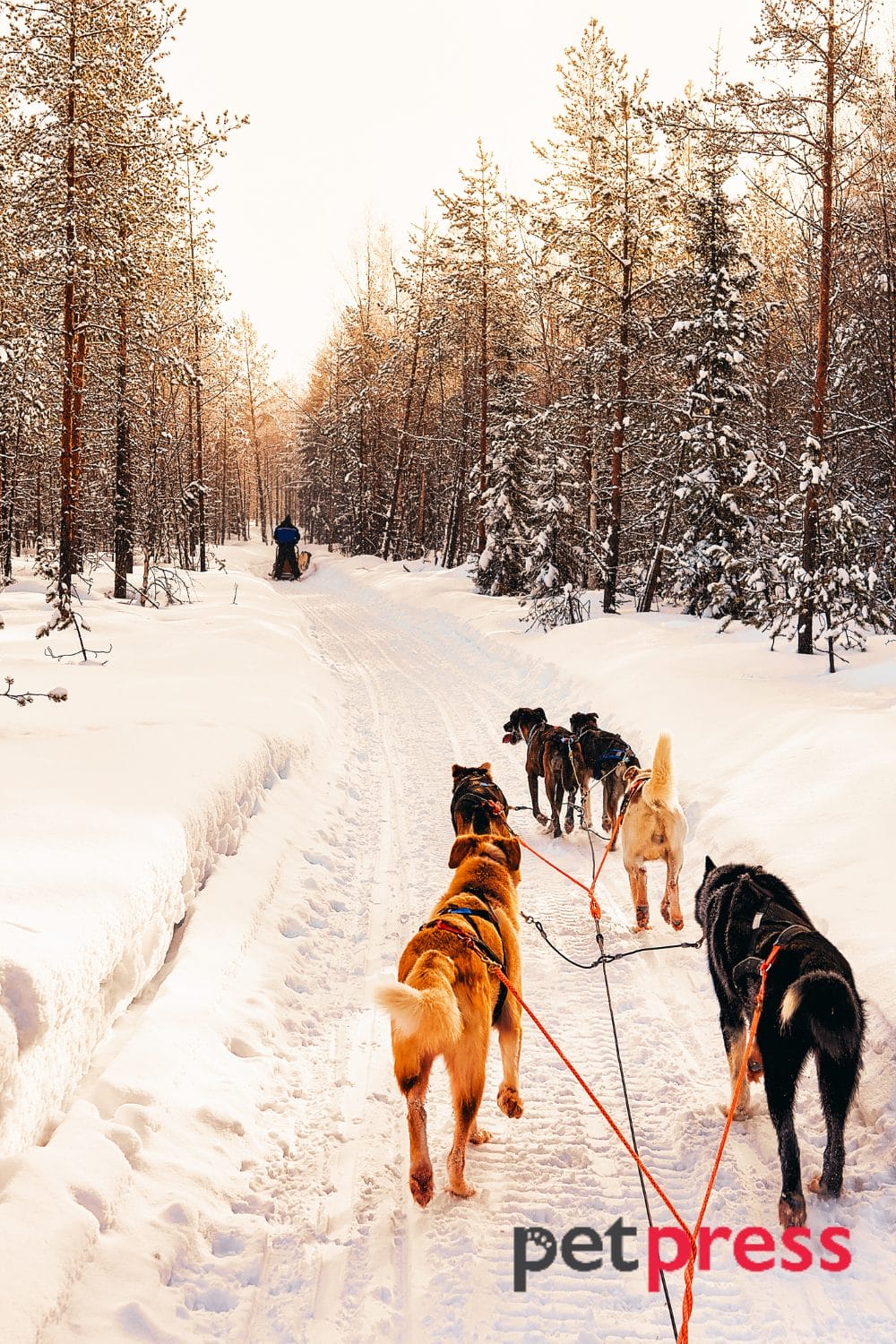
Winter Exercise Tips for Your Dog
It might seem daunting to keep your furry friend active when the temperatures drop and outside conditions are less than favorable. However, with our innovative and fun indoor and outdoor exercise suggestions, you’ll be well-equipped to ensure your dog stays enthusiastic, active, and, most importantly, happy during the winter months.
Indoor Exercise Ideas
When the weather outside is too frightful, don’t despair. There are plenty of entertaining and effective exercises your dog can do indoors. Here are some enjoyable ways to keep your dog active indoors:
1. Tug of War: A game of tug can give your dog a great mental and physical workout. Make sure to use a toy that’s strong and flexible.
2. Hide and Seek: This classic game can not only provide physical exercise but also mental stimulation. Hide treats or your dog’s favorite toy and watch them sniff out their prized possessions.
3. Stairs: If you have a staircase, use it for a fun and effective exercise session. Throw a toy up the stairs and let your dog fetch it, providing a great cardio workout.
Outdoor Winter Activities
If your dog is up for it and dressed for the weather, venturing out into the cold can be a lot of fun! Here are some outdoor activities that can keep your dog engaged and active:
1. Snowy Fetch: A twist on the classic game of fetch, use a brightly colored toy to stand out against the white snow.
2. Snow Maze or Obstacle Course: After a heavy snowfall, create a maze or an obstacle course in your backyard and let your dog navigate through it.
3. Winter Walks: A brisk walk can be more than enough exercise for many dogs. Remember to protect your dog’s paws from the cold and salt on pavements.
Just like us, dogs can feel the chill, too. So, as much as it’s important to keep your dog physically active, it’s equally important to keep them safe and warm.
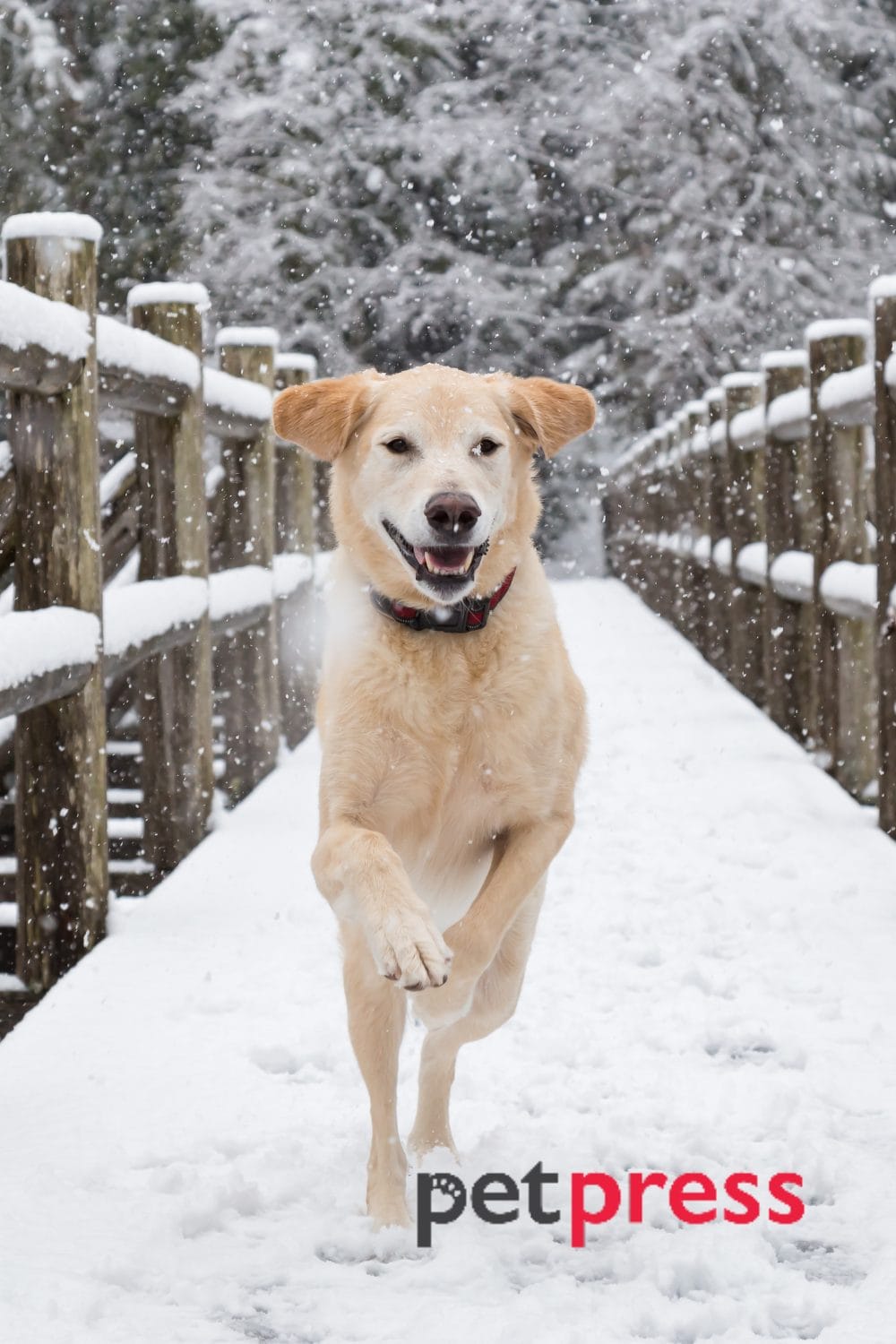
Safety Precautions for Dog Exercise in Winter
As much as we want our pets to enjoy the fun side of winter, it’s crucial to remember that the cold weather can come with its risks. In this section, we’ll discuss how to prevent cold-related injuries and guide you in selecting the most suitable gear for your dog’s winter workouts.
Preventing Cold-Related Injuries
Cold weather can expose your dog to hazards like frostbite and hypothermia. Frostbite is a tissue injury caused by freezing temperatures, typically affecting the ears, tail, and paws, while hypothermia is a condition where the body’s temperature gets dangerously low.
Preventing these conditions involves several steps such as understanding your dog’s tolerance to cold, limiting their time outside in extreme temperatures, and promptly drying them off when they come indoors.
It’s also important to check their paws regularly for signs of injury or cracked pads and keep their fur well-groomed but not overly trimmed, as it provides a layer of insulation.
Choosing the Right Gear
The right gear can make all the difference in ensuring your dog is safe and comfortable during winter exercises. Consider investing in a good-quality dog coat or sweater, especially for short-haired or small dogs.
Dog booties can protect paws from icy surfaces and harmful substances like ice-melt chemicals. Additionally, using reflective gear or lights can enhance visibility during short winter days when you might be walking in the dark.
Always remember, that safety is paramount. But with the right precautions and equipment, winter can be a fun season for your dog!
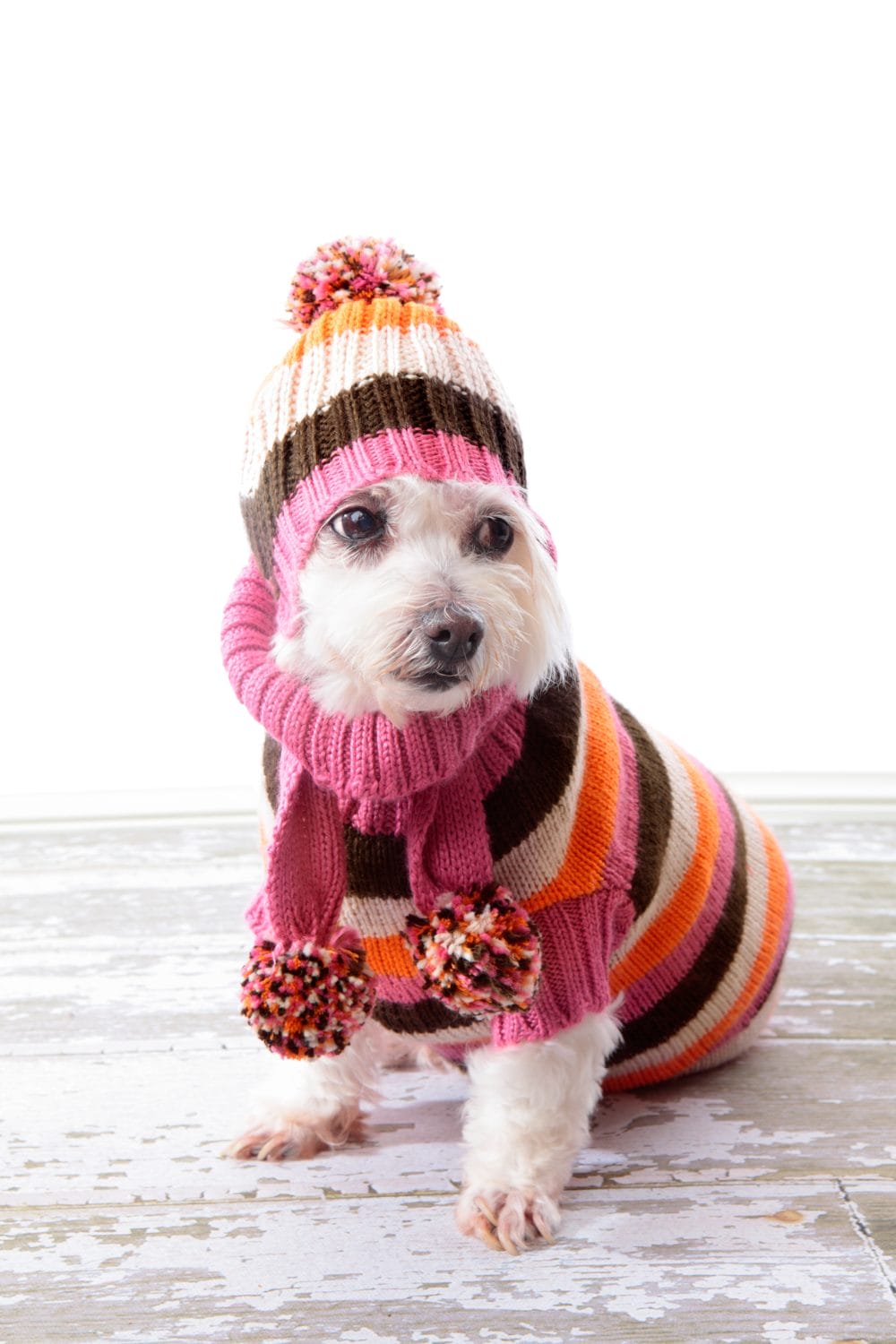
Conclusion
With the end of this guide, you are now a competent winter dog parent, armed with the necessary knowledge to keep your pooch active, healthy, and joyful, regardless of the frosty weather. You’ve learned how winter affects your dog, discovered various indoor and outdoor exercises, and understood the vital safety measures to take.
So pull those winter boots on! It’s time to embark on cozy indoor games and invigorating outdoor adventures with your furry friends, providing them with the best care possible. Remember, the information you’ve gained is valuable not just for you, but for other pet parents too.
So, don’t hesitate to share this comprehensive guide on your go-to social media platforms. Send out those winter woofs far and wide!
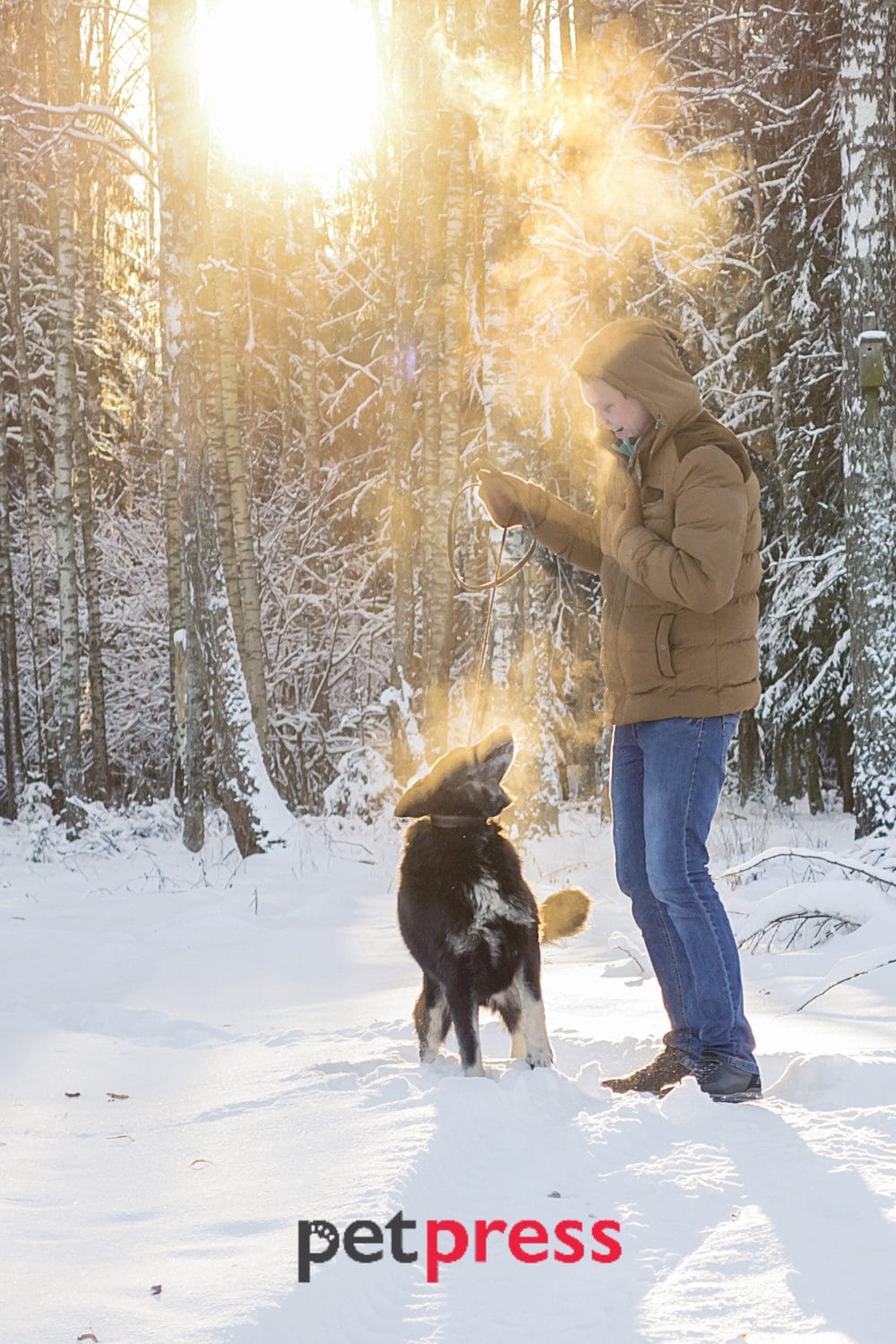
FAQs on How to Get Dog Exercise in Winter
Just like in any other season, regular exercise is crucial for your dog’s health in winter. The amount can depend on their age, breed, and health status. Always monitor your dog for signs of discomfort during winter workouts.
There are many indoor exercises like tug of war, hide and seek, or stair exercises that can keep your dog active when it’s too cold outdoors. Get creative and incorporate fun games to keep your dog engaged.
Cold weather and ice-melt products can damage your dog’s paws. Consider using dog booties for protection, and apply a paw balm to prevent drying and cracking.
Yes, dogs can indeed get frostbite, typically on their ears, tails, and paws. Limiting their time outdoors during extreme cold and providing proper gear can help prevent this.
Dress your dog appropriately, watch for signs of discomfort, and avoid walking on snow-melted pavements to ensure a safe and enjoyable walk. Also, remember to use reflective gear for visibility during early evenings.
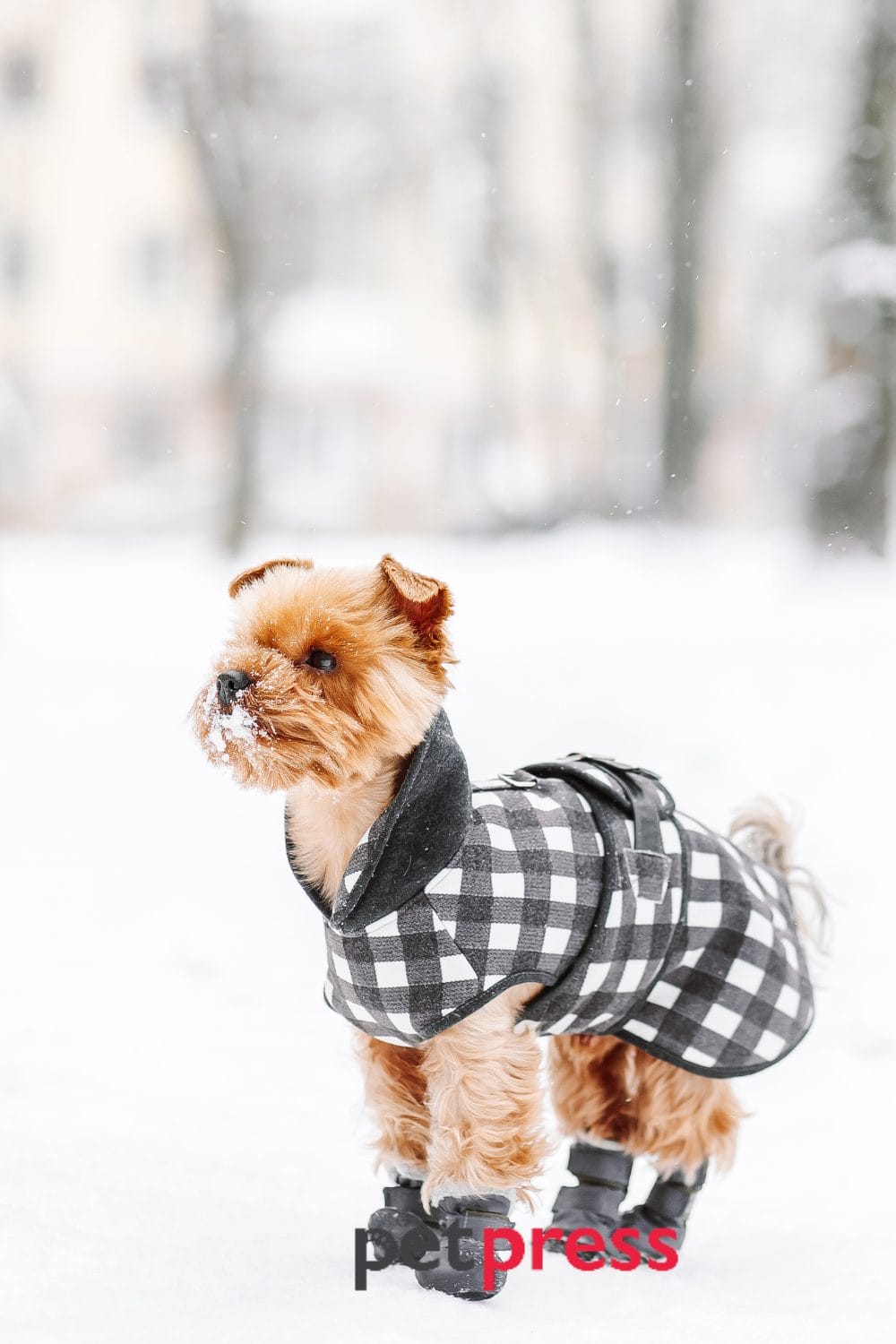
Continue Your Journey Towards Expert Pet Parenthood!
Enjoyed our comprehensive guide on keeping your dog active in the winter? There’s so much more to explore and learn! Check out our other articles packed with insightful tips, expert advice, and heartwarming pet stories.
Top 10 Best Dog Coats for Your Pet This Winter Season
20+ Best Winter Outfits For Your Dog
Over 120 Beautiful Winter Inspired Dog Names


GIPHY App Key not set. Please check settings